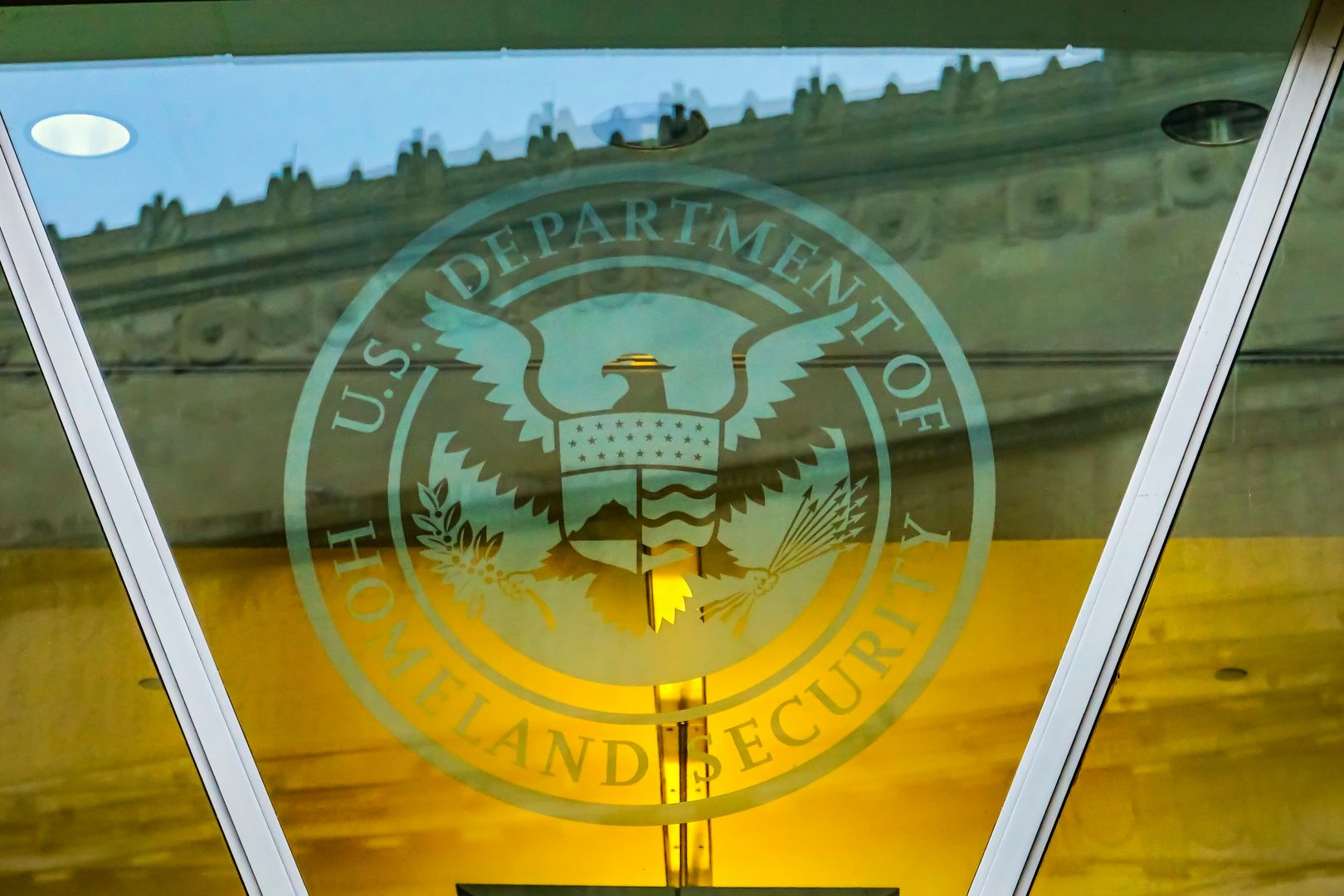Uncategorized
Market, Data Suggests Favorable Outlook for Bitcoin — CoinDesk Indices

It’s a big week for those of us tasked with making the case for bitcoin and crypto as an investable asset class. While global markets have been ugly, unpredictable and fragile of late, digital assets held steady with moderate volatility.
Bitcoin was up ~ 5% and the CoinDesk 20 Index was up ~ 6% last week. In a landscape where traditional assets seemed to lose their footing, crypto’s resilience offers an intriguing counternarrative to the skeptics who’ve long questioned its legitimacy during market stress.
A week ago (April 6), I described the market as a bus teetering on a cliff’s edge. It might have been exhilarating for skillful traders, but unhedgeable for managers of traditional asset portfolios. Sure, being long equity puts might have looked (and felt) great as futures tumbled Sunday night (April 13), but monetizing those puts in an extremely choppy and high-velocity market is near impossible – and forces the hedger to «call a bottom.» If you don’t monetize the puts and the market rebounds, your puts decay to zero, locking in a loss. (Or, if your hedge of choice was a retreat to U.S. Treasuries, it was even worse.)
The art of risk management in traditional markets is proving increasingly difficult in this environment. Even professional traders with decades of experience found themselves whipsawed by the market’s violent moves. For those managing pension funds, endowments, or family offices, the challenge of preserving capital while maintaining return targets has rarely been more daunting. The playbook that worked for the past decade seems increasingly irrelevant.
Bitcoin’s Resilience amid Liquidations
Amid the chaos, bitcoin kept a pretty narrow range. The two weakest periods, on April 7 and 9, lined up with perp liquidations (forced sales of leveraged positions that are much more “standard practice” in crypto than in traditional markets). This gave pundits a handy «low» price to challenge bitcoin’s aforementioned resilience, but we should push back here. Temporary liquidation dips are just that — artificial flows that are recoverable. They create a nice lower candle wick, but don’t always represent the whole market fairly; we should discount their relevance accordingly. (This may be a controversial view; fire away if you disagree.)

Store of Value vs. Safe Haven
As usual, pundits and skeptics blurred bitcoin’s «store of value» claim with «flight-to-quality» and «safe haven.» We will keep pounding the drum on the difference between «flight-to-quality»/»safe haven» and «store of value» assets. Bitcoin, still in its adolescence and with limited access to traditional liquidity pools (i.e., banks), shouldn’t be expected to function as a mature flight-to-quality or safe haven asset during extreme volatility episodes. Similarly, there are things I don’t expect or enlist my teenage children to do.
Seeing gold’s outperformance vs. bitcoin this year supports this argument. Gold has better access to traditional finance, is perceived to be limited in supply, and has a mature network. But does it have adoption momentum? Is it an asset of the future? While gold glitters in times of geopolitical and economic uncertainty, bitcoin offers something different – a technological evolution in the concept of money itself, with adoption curves that continue to remind us that we’re still early in its lifecycle.
Michigan Numbers: Uncertain Consumers -> Strong Bitcoin
The week’s crypto-supporting experience was capped by April 11’s University of Michigan Consumer Survey, which delivered two powerful data points supporting bitcoin’s price trajectory: the highest expectations for 1-year inflation since 1981(!) and elevated expectations for unemployment.

Source: University of Michigan

Source: University of Michigan
We favor anchoring bitcoin’s demand to expected real interest rates — the difference between expected nominal rates and inflation expectations. When real rates are expected to rise, bitcoin faces headwinds. Conversely, when real rates are expected to fall due to higher inflation and potential rate cuts (hello, rising unemployment expectations), bitcoin tends to benefit. The Michigan survey numbers provide a surprisingly clear north star for bitcoin accumulation: 1) higher expected inflation and 2) unemployment expectations that could prompt Fed easing. Lower nominal rates, higher inflation.
This framework helps explain bitcoin’s impressive performance during previous easing cycles and suggests we could be entering a similarly favorable environment. The divergence between consumer inflation expectations and the Fed’s more sanguine outlook bears watching closely – historically, the consumer has often proven more prescient than the central bank.
Beyond Bitcoin
With Paul Atkins now cleared to lead the SEC and other supportive regulatory developments, the broader crypto ecosystem shows promising signals. Can we expect the rest of the broad-based CoinDesk 20 Index, which covers about 80% of the market, to participate in a potential bitcoin-lead rally?
Two factors suggest yes.
First, asset correlations rarely break down during broad market rallies in this sector.
Second, the pro-blockchain uptrend dynamics we witnessed last November could reappear and reignite interest across Layer 1 blockchains like Ethereum, Solana, Sui, Cardano, and Avalanche, infrastructure providers like Chainlink and Filecoin, DeFi protocols like Uniswap and Aave, financial services assets like Ripple, and other sectors.
The potential for a broader rally suggests that diversification within the crypto space could once again prove rewarding, particularly if regulatory tailwinds continue to strengthen. The tide that lifts bitcoin rarely leaves other quality projects stranded.
Uncategorized
Canary Capital Files for Tron ETF With Staking Capabilities

Canary Capital is looking to launch an exchange-traded fund (ETF) tracking the price of Tron’s native token, TRX, according to a filing.
The hedge fund submitted a Form S-1 for the Canary Staked TRX ETF with the Securities and Exchange Commission (SEC) on Friday. As the name suggests, the fund — if approved — would stake portions of its holdings.
This would be done through third-party providers, with BitGo acting as custodian for the assets. The fund would track TRX’s spot price using CoinDesk Indices calculations.
A proposed ticker as well as the management fee for the product have not been shared yet.
Issuers had initially filed applications for spot ethereum (ETH) ETFs with the staking feature included but removed them in an amended filing later in order to receive approval from the SEC on their proposals.
While the SEC under former Chair Gary Gensler was strictly against staking, issuers have grown more hopeful that they will be able to add the feature to their spot ether funds, among others, with the appointment of crypto-friendly Chair Paul Atkins.
A decision on a February request from Grayscale to allow staking in the Grayscale Ethereum Trust ETF (ETHE) and the Grayscale Ethereum Mini Trust ETF (ETH) was postponed by the regulator just a few days ago.
Uncategorized
Feds Mistakenly Order Estonian HashFlare Fraudsters to Self-Deport Ahead of Sentencing

Just four months ahead of their criminal sentencing for operating a $577 million cryptocurrency mining Ponzi scheme, the two Estonian founders of HashFlare were seemingly mistakenly ordered to self-deport by the U.S. Department of Homeland Security (DHS) — an instruction that directly contradicted a court order for the men to remain in Washington state until they are sentenced in August.
In a joint letter to the court last week, lawyers for Sergei Potapenko and Ivan Turogin told District Judge Robert Lasnik of the Western District of Washington that both men had received “disturbing communications” from DHS ordering them to leave the country immediately.
“It is time for you to leave the United States,” an email to Potapenko and Turogin dated April 11 read. “DHS is terminating your parole. Do not attempt to remain in the United States — the federal government will find you. Please depart the United States immediately.”
The email, included with the letter filed last week, threatened both men with “criminal prosecution, civil fines, and penalties and any other lawful options available to the federal government” if they stayed in the country. It resembles emails that undocumented immigrants and U.S. citizens alike have received over the past few days.
Ironically, Potapenko and Turogin are not in the U.S. of their own volition — they were extradited from their native Estonia at the request of the U.S. Department of Justice in 2022 on an 18-count indictment tied to their HashFlare scheme. Though they initially pleaded not guilty to all charges, in February they both pleaded guilty to one count of conspiracy to commit wire fraud, which carries a maximum sentence of 20 years in prison, and agreed to forfeit over $400 million in assets. They have both been in the Seattle area on bond since last July.
“Although there is nothing Ivan and Sergei would want more than to immediately go home, they understood that they are also under Court order to remain in King County,” wrote Mark Bini, a partner at Reed Smith LLP and lead counsel for Potenko, wrote in the pair’s joint letter to the court. Bini did not respond to CoinDesk’s request for comment.
In his letter, Bini said DHS’s emails had caused both Potapenko and Turogin «significant anxiety.”
“We and our clients have all seen recent news. Immigration authorities make mistakes, and individuals who should not be in custody end up in custody, sometimes even deported to places where they should not be deported,” Bini wrote.
Six days after Bini’s letter to the judge, the DOJ filed its own letter with the court saying that prosecutors had coordinated with DHS’s Homeland Security Investigations (HSI) division and secured a year-long deferral to the self-deportation order.
“This should provide ample time for the sentencing to take place,” the prosecution’s letter said.
DHS did not respond to CoinDesk’s request for comment.
Potapenko and Turogin are slated to be sentenced on August 14 in Seattle. Their lawyers have said that they will request to be sentenced to time served, meaning no additional time in prison, and to be sent home to Estonia “immediately.”
Uncategorized
CoinDesk Weekly Recap: EigenLayer, Kraken, Coinbase, AWS

Following last week’s tariff-caused drama, this was a relatively quiet week in crypto. Bitcoin remained stable around $84k. The CoinDesk 20, which tracks about 80% of the market, was up about 4% in the last seven days — i.e. nothing historic.
Still, plenty happened. On Tuesday, much of crypto went offline because of a tech issue at AWS, showing how the decentralized economy isn’t always that decentralized. Shaurya Malwa reported the news early. Bitcoin and other major cryptos slipped on bad news for Nvidia, Omkar Godbole reported.
Mantra, a project focused on real world assets, lost 90% of its value. Explanations varied (the company said it was due to “force liquidations” exchanges).
Meanwhile, EigenLayer, a restaking leader, rolled out a “slashing” feature meant to address security concerns (Sam Kessler reported). OKX, a major exchange, announced plans to set up in California following a $500 million settlement with the SEC over claims it operated previously in the U.S. without a money transmitter license. Cheyenne Ligon had that story.
In less good news, Kraken laid off “hundreds” of staff ahead of an expected IPO. And Coinbase became embroiled in a “front running controversy” linked to a curiously named token on its Base L2. Privacy advocates reacted with alarm to rumors that Binance was about to delist Zcash following a long decline in the value of privacy coins.
In D.C. news, Jesse Hamilton reported on a new wave of crypto lobbyists flooding the capital. Some asked if there are now too many trade groups and whether they really all could be effective.
Friends With Benefits, a buzzy social club for creative technologists, launched a new program to build Web3 products for music, film, publishing and other fun activities. (I wrote that one.)
Of course, there was plenty happening in the economy and markets (Trump’s disgust for Fed chair Powell fed into the unease). But, in crypto, it was pretty much business as usual. Fortunes won, fortunes lost, fortunes deferred.
-

 Fashion6 месяцев ago
Fashion6 месяцев agoThese \’90s fashion trends are making a comeback in 2017
-

 Entertainment6 месяцев ago
Entertainment6 месяцев agoThe final 6 \’Game of Thrones\’ episodes might feel like a full season
-

 Fashion6 месяцев ago
Fashion6 месяцев agoAccording to Dior Couture, this taboo fashion accessory is back
-

 Entertainment6 месяцев ago
Entertainment6 месяцев agoThe old and New Edition cast comes together to perform
-

 Sports6 месяцев ago
Sports6 месяцев agoPhillies\’ Aaron Altherr makes mind-boggling barehanded play
-

 Business6 месяцев ago
Business6 месяцев agoUber and Lyft are finally available in all of New York State
-

 Entertainment6 месяцев ago
Entertainment6 месяцев agoDisney\’s live-action Aladdin finally finds its stars
-

 Sports6 месяцев ago
Sports6 месяцев agoSteph Curry finally got the contract he deserves from the Warriors





